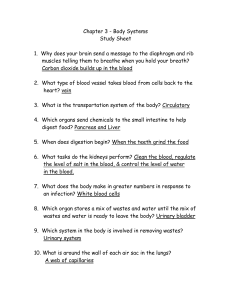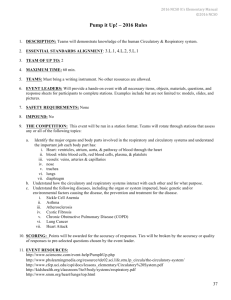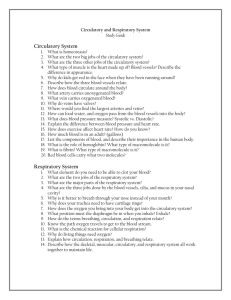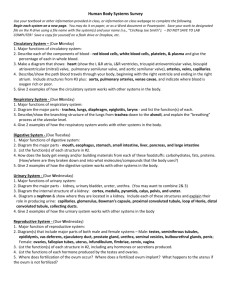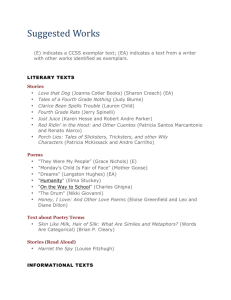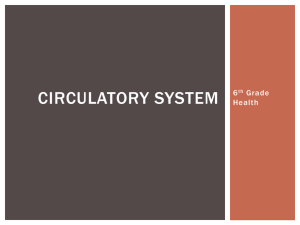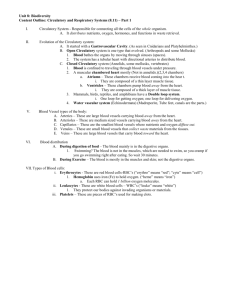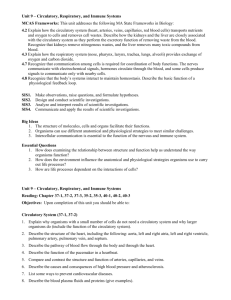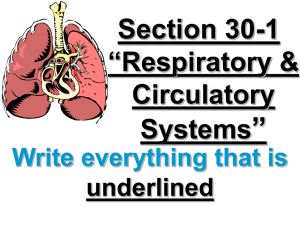Chapter 3 – Human Body Systems – Study Guide Circulatory
advertisement
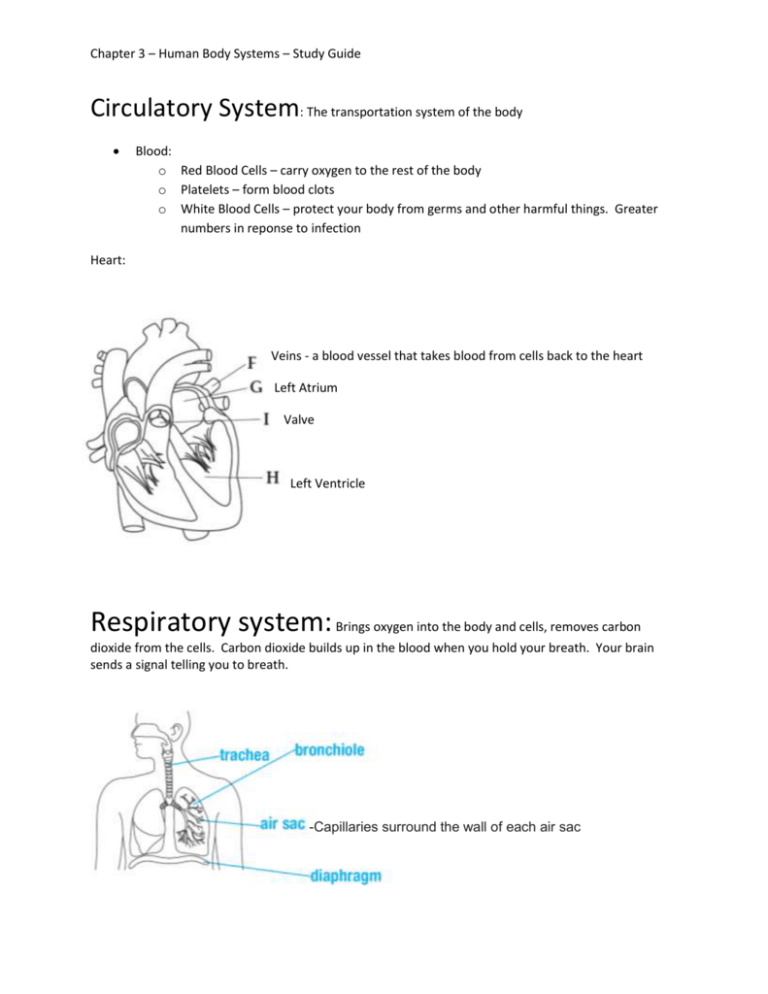
Chapter 3 – Human Body Systems – Study Guide Circulatory System: The transportation system of the body Blood: o Red Blood Cells – carry oxygen to the rest of the body o Platelets – form blood clots o White Blood Cells – protect your body from germs and other harmful things. Greater numbers in reponse to infection Heart: Veins - a blood vessel that takes blood from cells back to the heart Left Atrium Valve Left Ventricle Respiratory system: Brings oxygen into the body and cells, removes carbon dioxide from the cells. Carbon dioxide builds up in the blood when you hold your breath. Your brain sends a signal telling you to breath. -Capillaries surround the wall of each air sac Chapter 3 – Human Body Systems – Study Guide Digestive System: Begins when teeth grind food Food then moves through the esophagus when rings of tiny muscles squeeze food down. The pancreas and liver send chemicals to the small intestine to help digest food. Villi in the small intestines provide more surface area to absorb food. Urinary System: involved in removing waste from the body Kidneys: o Clean the blood o Regulate the level of salt in the blood o Control the level of water in the blood Urinary Bladder – stores a mix of wastes and water until the mix of wastes and water is ready to leave the body Urinary system and Circulatory systems work together: The urinary system cleans the blood in the circulatory system. Blood traveling back to the heart passes through the kidneys in the urinary system. The kidneys clean the blood and control the amount of salt, water, and other substances in the blood. Extended Response Identify where the respiratory and circulatory systems work together in the human body. Explain how the two systems interact with each other at this location. Then explain what happens to the circulatory system when the respiratory system does not function properly. The respiratory and circulatory systems work together in the chest. In the chest, oxygen transfers from the alveoli to blood in the capillaries. The blood then travels throughout the body, distributing oxygen. Also, carbon dioxide leaves the blood at the alveoli and enters the lungs where it is then expelled. If the respiratory system does not function to its full ability, then the circulatory system cannot transport enough oxygen throughout Chapter 3 – Human Body Systems – Study Guide the body. Without enough oxygen, other organs and tissues of the body will not function to their full ability.
